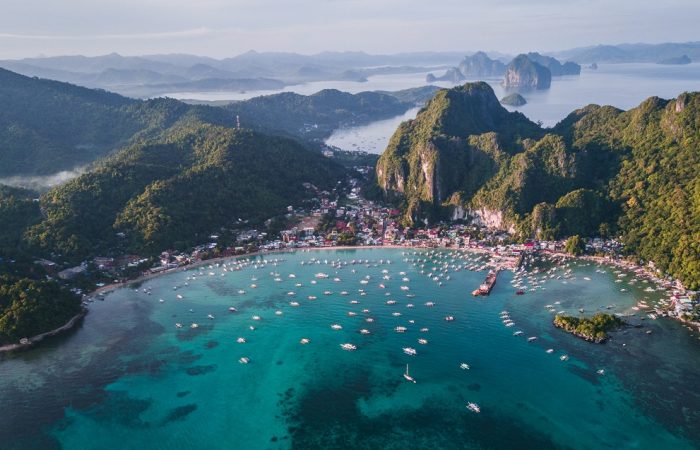The South China Sea is one of the largest semi-enclosed seas Surrounded by 9 states and 1 entity. More than 300 million people live along its coastal areas. Among the major marginal seas in the world, the South China Sea is known for its rich biodiversity resources. 12% of mangrove forests in the world and 30% in Asia are located along the coast of the South China Sea. 20% of coral reefs in Southeast Asia are located in the South China Sea.
The South China Sea also carries tremendous geographic importance. One-third of the world’s shipping passes through the South China Sea carrying over $3 trillion in trade each year. It contains lucrative fisheries that are important for the food security of millions in Southeast Asia. Since the South China Sea is the traffic artery connecting the Pacific Ocean and the Indian Ocean, nearly all airlines and shipping routes through the South China Sea must go through the busy international sea lanes. The picture in the left side shows the main sea lanes in the South China Sea, and the picture in the right side demonstrates the shipping traffic condition of this October.
In the past thirty years, the marine environment of the South China Sea has been under serious threats arising from the fast-economic development and high population growth. For example, according to the estimation of Chinese research institutions, many mangroves, coral reefs and sea-grass beds in SCS are affected and show a trend of decline. The living environment of marine mammals such as whales and dolphins also is seriously threatened.
Marine environmental pollution sources in the South China Sea mainly include land-based pollution, ship pollution, dumping, and marine resource development activities, including the development of oil and gas and fishery resources. I also found similar problems during my research in Guangdong, Guangxi, and Hainan provinces in China. In order to protect the marine environment, the Chinese government has implemented the Blue Sea (Bihai) Initiative in recent years and achieved good results.
The effects of pollution in the South China Sea are regional in nature which means that coordination and cooperation at regional level is essential. The difficulties that the coastal countries of the South China Sea face in maritime cooperation are obvious but not easy to solve. First, disputes over territorial sovereignty and maritime delimitation cannot be resolved in a short period of time, and there is insufficient political mutual trust between the countries involved. Second, maritime cooperation mechanisms at different levels have been established, but there are problems such as overlapping functions, insufficient funds, and mechanism fragmentation. Third, coastal countries have different capabilities in marine environmental protection.
As far as marine environmental protection is concerned, a series of treaties and agreements, including the United Nations Convention on the Law of the Sea, have established a specific framework. At the same time, general international law, including customary international law, also establishes several principles on environmental protection.
According to the Article 123 of Convention on the Law of the Sea, States bordering an enclosed or semi-enclosed sea should cooperate with each other in the exercise of their rights and in the performance of their duties. In this context, the coastal states of SCS should take confidence-building measures as well as conduct bilateral and regional cooperation in the region. In the existing regional cooperation mechanism, ASEAN and China both play an important role. Article 6 of the DOC also stipulates the field of maritime cooperation, but the implementation effect in the past ten years has not been particularly satisfactory.
There are many reasons for this problem, including political, economic and technical factors. Given the complex situation in the South China Sea, an effective way is to promote cooperation in low sensitive areas among neighboring states. Through bilateral activities, such as marine rescue operation, fishery cooperation, joint scientific research, mutual confidence and cooperation mechanism can be built among the coastal states. Implementing maritime cooperation under the DOC framework is still of great significance. Deepen marine functional cooperation while advancing COC consultation is a pragmatic and feasible choice for this region. After the COC consultation is completed, it is possible for the coastal states to discuss the conclusion of a treaty on environmental protection in the South China Sea.
Ding Duo, deputy director of research center for oceans law and policy of National Institute for South China Sea Studies (NISCSS), non-resident research fellow of Institute for China-America Studies (ICAS).




